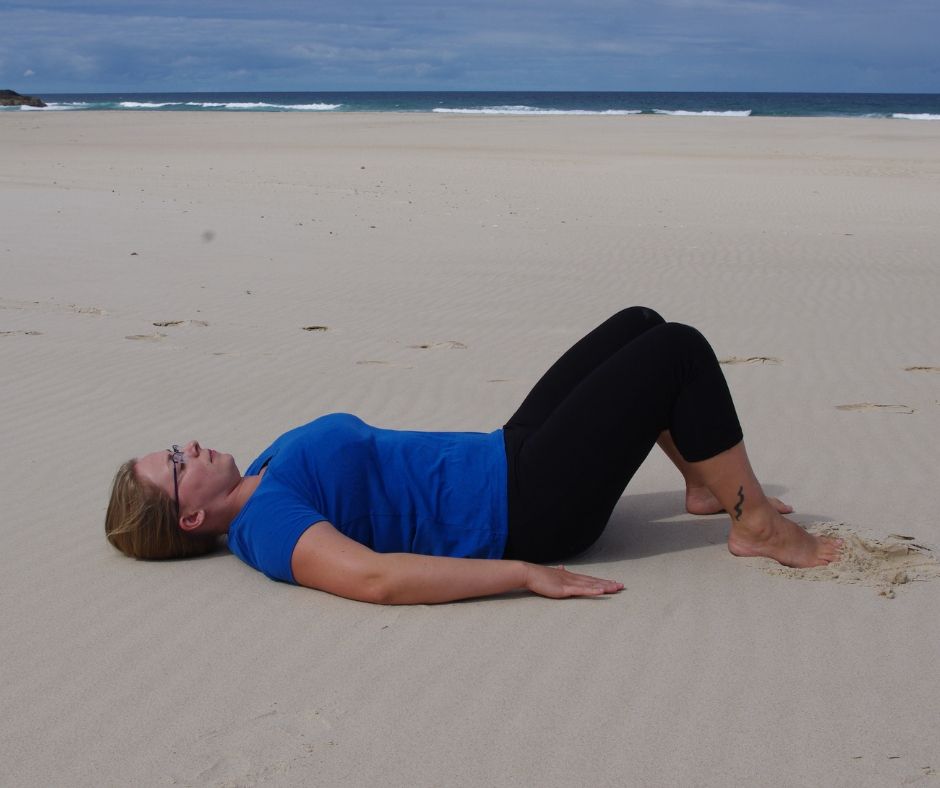 Most women will complain of issues with their pelvic floor – from leaking urine when you cough or sneeze, to not being able to go on the trampoline with the kids for fear of wetting yourself. The statistics for urinary incontinence in women are staggering, with reports of 30-50% of women being affected by urinary incontinence at some point in their life.
Most women will complain of issues with their pelvic floor – from leaking urine when you cough or sneeze, to not being able to go on the trampoline with the kids for fear of wetting yourself. The statistics for urinary incontinence in women are staggering, with reports of 30-50% of women being affected by urinary incontinence at some point in their life.
30% – 50% Of Women Affected
Most women would like to be able to improve their pelvic floor function as a stronger pelvic floor helps improve symptoms of urinary incontinence meaning less chance of leaking when you cough, sneeze or laugh.
A stronger pelvic floor can even mean you can get back to playing on the trampoline with the kids or getting back to running or exercise that you thought you couldn’t do anymore due to the dreaded leaking.
So how do we improve our pelvic floor function? Here are my tips, as a women’s health physiotherapist, to getting the best out of your pelvic floor.
Keep Your Pelvic Floor Exercises Simple
Pelvic floor exercises don’t need to be complicated, but you need to make sure you are doing them correctly. The easiest way to check if you can switch on your pelvic floor muscles is to lay down on your back, knees bent up and feeling relaxed.
Now, to get a good strong pelvic floor contraction, imagine you need to pass wind, but you want to hold it in. You are going to think about lifting from your back passage and feel the contraction through your pelvic floor. This should give you a stronger contraction than just thinking about trying to stop your flow of urine (which is often what we are taught when told about our pelvic floor).
The reason you get a stronger contraction is because we are engaging some of the stronger pelvic floor muscles which wrap around the anus and give us the lift from the back passage.
Keep Breathing
So think about lifting from your back passage and try and hold that contraction for 2-3 breaths in and out. This is when people often find they lose the contraction. But you need to be able to contract your pelvic floor and breathe! If you can’t keep the contraction whilst breathing, then this is where you need to start with your pelvic floor exercises.
If you can’t keep your pelvic floor switched on and breathe, then you definitely won’t be able to keep your pelvic floor switched on when trying to do more complicated exercises or whilst you are jumping on the trampoline!
Start With What You Can Manage
I suggest people see what they can mange with this exercise, e.g. if you can hold the pelvic floor contraction for 5 seconds, then start there. Try and hold the contraction for 5-6 seconds, remembering to keep breathing whilst you count to 5 or 6 and then relax. Try and do this up to 10 times.
You will probably find that after 5 or 6 of these it becomes harder to maintain the contraction and you may find that you can’t then hold the contraction for the full 5 seconds, that is fine, that is just your pelvic floor muscles getting tired.
The more you practice this the easier it will get and the stronger your pelvic floor will get. So work towards 10 repetitions of the exercise holding for as long as you can maintain the contraction.
One of the best ways I have found, and regularly recommend to clients, is to actually use an app on your phone to remind you to do these exercises – but that’s my next tip!
Use An App To Remember To Do Your Exercises
I have found the best way for people to remember to do their pelvic floor exercises is to actually use an app on their phone. Not only does this remind them throughout the day to do their exercises but these apps often have really good visual and audio prompts to take you through your exercises.
The best free app that I would recommend using is ‘My pff’ which lets you set unlimited reminders throughout the day and has a nice results section that clocks all your workouts that you do. (For more info on pelvic floor apps you can check out my blog about them here).
Learn ‘the knack’
When we cough or sneeze our pelvic floor muscles should switch on automatically to support our pelvic organs and prevent any leaking of urine – unfortunately this doesn’t always happen. So this is where ‘the knack’ comes in! The Knack is basically a quick, strong pelvic floor contraction (that you can practice) that helps to prevent any leaking when you need that sudden quick switch-on of your pelvic floor muscles.
‘The Knack’ is not just about your pelvic floor muscle strength, it is also about co-ordination of these muscles. It is about these muscles switching on quickly when they need to.
You can test yourself by doing 3 strong coughs and see if you feel your pelvic floor switch on. If you don’t feel it switch on, you will need to practice ‘the knack’. With practice, you will eventually find that your pelvic floor will switch on automatically (when you cough, sneeze, laugh etc) and without you having to consciously think about it.
How To Do It
‘The Knack’ is simple to do, just practice trying to do a quick strong pelvic floor contraction, holding it for 2 seconds. Do this 3-5 times, you will probably feel that your contraction starts to feel weaker each time you do it. That’s ok, it’s your pelvic floor muscles getting tired again.
Practice ‘the knack’ every day (with some of the pelvic floor phone apps they will prompt you to practice these short sharp pelvic floor contraction too) and then, before you need to cough or sneeze, do ‘the knack’ and this will engage your pelvic floor and help you to not leak.
Exercise – And Enjoy It!
Exercise, any type of exercise is great for us. Not just for our physical health but for our mental health too. I always encourage people to exercise even if it’s a stroll on the beach or going for a quick swim after work.
Any exercise can help us work our pelvic floor muscles, as these muscles should be switching on to help our core when we are moving around and exercising and if you don’t have any pelvic floor problems or leaking when you exercise then that is awesome, keep up the good work! However, a lot of women do experience leaking of urine when doing certain exercises, so this is when we need to look at what’s going on and why, and that’s my next tip….
See A Women’s Health Physio
If you don’t exercise, or wear a pad to exercise, because of leaking then see a women’s health physio ASAP.
It could be that the type of exercise you are doing is too much for your pelvic floor and you may need to strengthen up and work your pelvic floor before returning to it. If you are leaking with exercise the best thing to do is to go and see a women’s health physio as they will be able to fully assess what is happening and work out a specific strengthening programme to help you return to your sport.
A lot of people won’t seek help in this case, they will either simply wear a pad and continue with their exercise or they will just stop doing this type of exercise. But this doesn’t need to be the case.
Normal?
I often hear women say that leaking urine is ‘normal’, but it isn’t normal, it is very common, but it is not normal. What I mean by this is that it happens to a lot of people (remember the statistic at the beginning of this article? 30-50% of women experience leakage of urine.) So it is super common to happen to women, but that doesn’t mean it is normal.
It shouldn’t be happening, and the good news is there are plenty of things that can help improve and hopefully, fully resolve your symptoms. The first step is seeing a qualified women’s health physiotherapist (your GP can refer you to one if needed) as they will be able to fully assess what is going on, and then set you up with a specific programme to help you.
Those are my top 5 tips for improving your pelvic floor function, I hope you have enjoyed and they have been helpful. If you would like to read more about pelvic floor and women’s health then check out my blog at www.pelvic-flaws.com.
Thanks for reading.
Lisa Rushton (Women’s Health Physiotherapist)
If you like this post, why not look at some of the other posts we have about self-care, including 9 of the best self-care podcasts. And if you’re a new mum, why not read our 8 self-care tips for new mums.









I wasn’t aware that a lot of women, about 30-50%, share the same situation as my mother. She’s been experiencing urinary incontinence in her late 50s and is always complaining about how hard it is to keep her urine in. Thank you for telling me that there are exercises she could do to improve her pelvic floor function. Also, I think it’s best to consult a physical therapist for better results.
Glad it helped. Thanks Lou